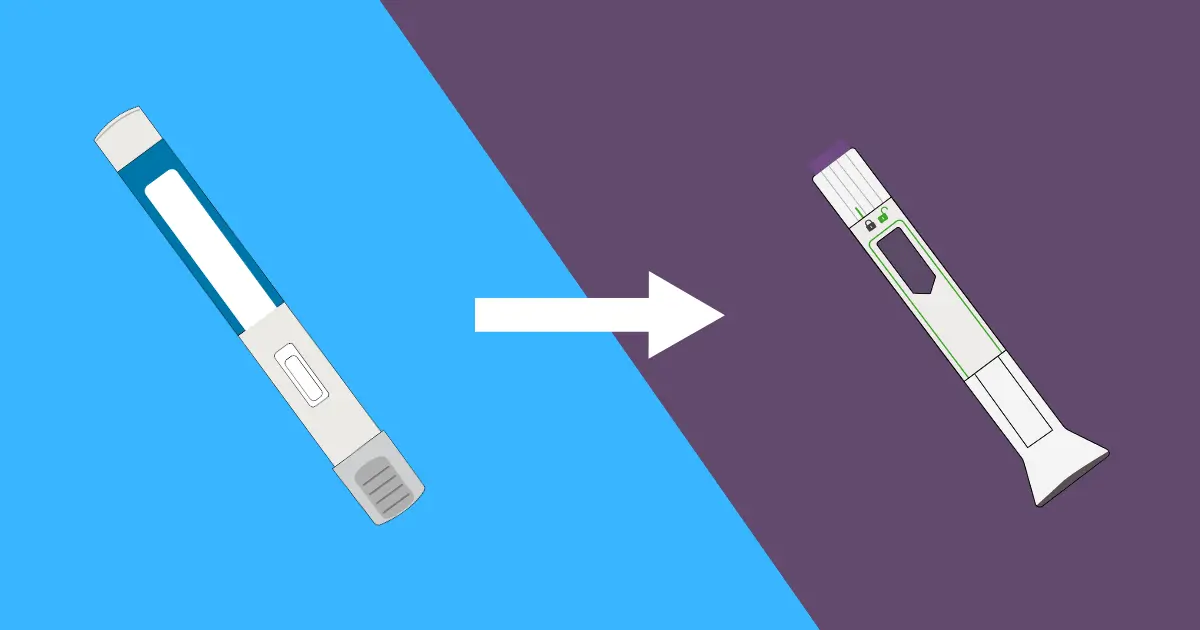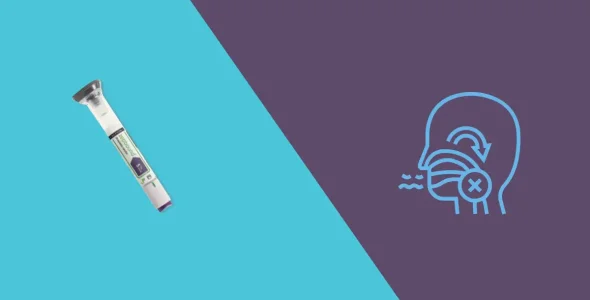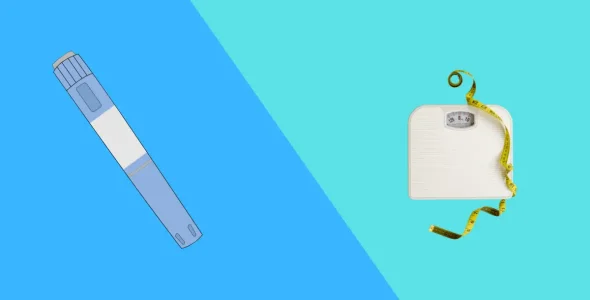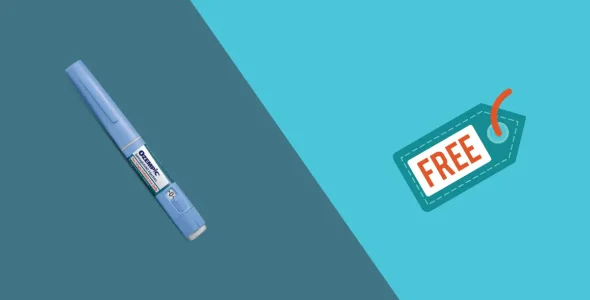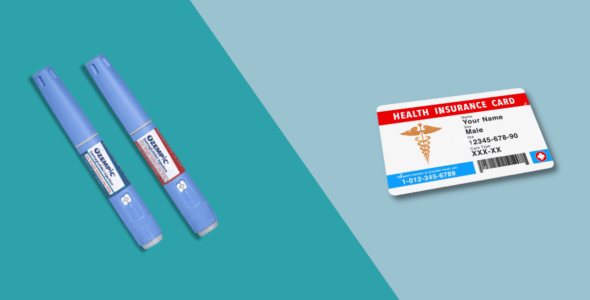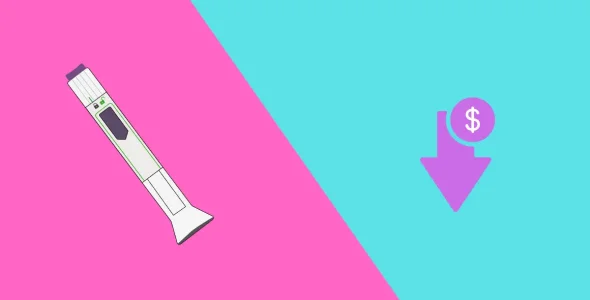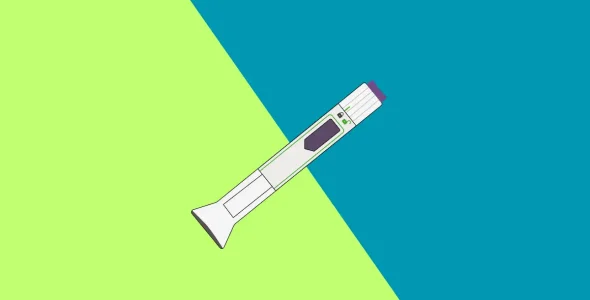Switching from Ozempic to Zepbound conversion chart
Switching from Ozempic to Zepbound? Without the right dose conversion, you risk side effects or reduced effectiveness. Keep reading to learn how to safely switch medications.
Key highlights
- Ozempic (semaglutide) is FDA-approved for type 2 diabetes management and Zepbound (tirzepatide) is approved for chronic weight management in obese and overweight individuals. Ozempic is also widely used off-label for weight loss.
- Ozempic pre-filled single-dose subcutaneous injections come in 0.5 mg, 1 mg, and 2 mg doses, whereas Zepbound is available in 2.5 mg, 5 mg, 7.5 mg, 10 mg, 12.5 mg, and 15 mg pre-filled, single-use subcutaneous injections and vials.
- Novo Nordisk or Eli Lilly do not offer a conversion chart to find an equivalent dose when switching from Ozempic to Zepbound.
- When you want to change your current medication, talk to your doctor to find the best dose of Zepbound depending on your health goals, tolerability, and existing medical conditions.
Tirzepatide, semaglutide, and liraglutide are widely used for type 2 diabetes management and weight loss in patients with overweight and obesity. Ozempic (semaglutide) is approved by the U.S. Food and Drug Administration (FDA) for type 2 diabetes management. Zepbound (tirzepatide) is FDA-approved for chronic weight management in overweight and obese individuals.
Ozempic is a GLP-1 receptor agonist drug, whereas Zepbound is a GIP/GLP-1 dual receptor agonist. Both medications may have slightly different results and side effects because of their distinct mechanism of action. However, Ozempic has shown significant results in weight loss in patients taking the medication for type 2 diabetes, leading to its increasing off-label use for weight management. Healthcare providers may suggest patients switch from Ozempic to Zepbound or Wegovy for weight loss due to individual responses, availability, cost, or specific health goals.
This article covers the differences between Ozempic and Zepbound to help you understand their unique mechanism of action, guidelines for switching between these medications, potential side effects, and other important details. Keep reading to find out the factors to consider while switching and how to transition from Ozempic to Zepbound safely.
Understanding Ozempic and Zepbound
Ozempic (semaglutide)
Ozempic (semaglutide) is a GLP-1 receptor agonist drug that activates the GLP-1 receptor. It reduces blood sugar by stimulating insulin secretion and lowering glucagon secretion. This mechanism is glucose-dependent, and Ozempic lowers glucose levels when the blood glucose levels are high. The drug also delays gastric emptying, contributing to lower blood glucose levels and a suppressed appetite that leads to weight loss.
Ozempic is approved for glycemic control in adults with type 2 diabetes mellitus along with diet and exercise. It is also indicated in patients with type 2 diabetes mellitus and established cardiovascular diseases to reduce the risk of adverse cardiovascular events. The FDA has approved the use of Ozempic in reducing the risk of cardiovascular death, sustained eGFR decline, and end-stage kidney disease in individuals with type 2 diabetes mellitus and chronic kidney disease. Though the medication is also widely used for weight loss, the FDA has not approved it for weight management.
It comes in three pre-filled, single-use, subcutaneous doses: 0.5 mg, 1 mg, and 2 mg for weekly administration.
Your doctor will start the medication at 0.25 mg weekly, increasing it to the 0.5 mg dose after four weeks, followed by 1 mg and 2 mg after four more weeks of each dose, depending on your tolerance and needs. The recommended maintenance dosage by Novo Nordisk is 0.5 mg, 1 mg, or 2 mg once weekly, based on glycemic control.
Gastrointestinal side effects, such as nausea, diarrhea, vomiting, constipation, and abdominal pain, are common with Ozempic use. These side effects can be managed easily with dietary and lifestyle modifications, and typically go away after a few weeks.
Zepbound (tirzepatide)
Zepbound (tirzepatide) is a GIP/GLP-1 dual agonist receptor drug that acts on the GIP receptor and GLP-1 receptors in the body to reduce appetite and regulate blood sugar levels. The GLP-1 hormone reduces glucagon secretion, stimulates insulin production in a glucose-dependent manner, and reduces appetite by delaying gastric emptying, while the GIP hormone improves insulin sensitivity. This synergistic action of both pathways contributes to improving blood glucose and weight loss.
It is approved by the FDA for chronic weight management in adults with obesity (BMI ≥ 30), or overweight (BMI ≥ 27) with at least one weight-related condition, such as type 2 diabetes, high blood pressure, or high cholesterol. It is also approved for moderate to severe obstructive sleep apnea (OSA) in adults with obesity.
Zepbound comes in pre-filled, single-dose pens or vials, in the following strengths:
- 2.5 mg/0.5 ml
- 5 mg/ 0.5 ml
- 7.5 mg/0.5 ml
- 10 mg/0.5 ml
- 12.5 mg/0.5 ml
- 15 mg/0.5 ml
The recommended starting dose of Zepbound is 2.5 mg weekly, which can be increased in 2.5 mg dose increments every four weeks, up to a maximum weekly dose of 15 mg. Doctors usually recommend a maintenance dosage of Zepbound 5 mg, 10 mg, or 15 mg, injected subcutaneously once weekly. The starting dose and maintenance doses of Zepbound (2.5 mg, 5 mg, 7.5 mg, 10 mg, 12.5 mg, 15 mg) are higher compared to Ozempic (0.5 mg, 1 mg, 2 mg).
Users may experience the common side effects of Zepbound when starting the medication. Gastrointestinal side effects are the most common, including nausea, diarrhea, constipation, vomiting, and abdominal pain. These side effects typically resolve on their own within a few days or weeks.
Key differences between Ozempic and Zepbound
Despite similar uses in diabetes management and weight loss, Ozempic and Zepbound have different active ingredients and vary in efficacy, mechanism of action, and dosage. We’ve shared the key differences between the medications below.
Mechanism of action
Ozempic (semaglutide) works on the GLP-1 receptors, whereas Zepbound (tirzepatide) is a dual receptor agonist that binds to glucagon-like-peptide-1 (GLP-1) and gastric inhibitory polypeptide (GIP) receptors in the body. The dual action of tirzepatide is believed to be more efficient in weight loss compared to the single-agonist action of semaglutide. Similarly, another tirzepatide drug by Eli Lilly, Mounjaro, has shown better efficacy in type 2 diabetes management than Ozempic (semaglutide).
FDA approval
Zepbound has been approved by the FDA for chronic weight management, and Ozempic has been approved for glycemic control in people with type 2 diabetes. Most healthcare professionals will prescribe Zepbound or Wegovy for weight loss instead of Ozempic to avoid drug shortages for patients with type 2 diabetes mellitus. While the FDA has acknowledged Ozempic’s role in reducing the risk of cardiovascular events and kidney disease, Zepbound is also approved for Obstructive Sleep Apnea (OSA) in obese individuals.
Efficacy in weight loss
Ozempic has not been studied against Zepbound, but the recent SURMOUNT 5 trial compared the efficacy of Wegovy (semaglutide) and Zepbound (tirzepatide) in weight loss. According to Eli Lilly, Zepbound (tirzepatide) showed superior weight loss over Wegovy (semaglutide) in SURMOUNT-5 results.
An average weight loss of 20.2% was seen with Zepbound vs. 13.7% with Wegovy in obese patients without diabetes. In key secondary endpoints, Zepbound proved to be of higher efficacy than Wegovy across all weight reduction targets and waist circumference reduction.
Research also showed that those taking tirzepatide were more likely to achieve 5% or greater, 10% or greater, and 15% or greater weight loss, and lost more weight over 3, 6, and 12 months.
SURMOUNT-1 clinical trials studying the efficacy and safety of semaglutide 2.4 mg concluded that the patients lost 14.9% of their body weight after 68 weeks. In another clinical trial spanning over the same period of 68 weeks, tirzepatide showed a weight loss of 20.9% at 15 mg (maximum dose). The comparison between both studies shows the superiority of tirzepatide in weight loss when considering maximum doses.
Dosage and titration
Ozempic pre-filled single-dose subcutaneous injections come in 0.5 mg, 1 mg, and 2 mg doses, whereas Zepbound is available in 2.5 mg, 5 mg, 7.5 mg, 10 mg, 12.5 mg, and 15 mg pre-filled, single-use subcutaneous injections and vials. Ozempic is typically started at 0.25 mg, and Zepbound starting dose is 2.5 mg to minimize GI-related side effects. Weekly dose for both drugs can be increased to the next dose, every four weeks, or until the user shows better tolerability to the dose. Zepbound’s titration to the maximum dose might be faster than Ozempic because of a larger weekly increment.
Cardiovascular benefits
Ozempic has been seen to be beneficial in cardiovascular risk reduction in patients with type 2 diabetes. It is also approved for its use in reducing the risk of major adverse cardiovascular events in adults with type 2 diabetes mellitus and established cardiovascular disease, whereas Zepbound’s cardiovascular outcomes are yet to be concluded.
Approved patient populations
The glycemic control and cardiovascular benefits of Ozempic have been studied and approved in patients with type 2 diabetes only. However, Zepbound may be prescribed to patients with or without diabetes, if they are obese or overweight with a health-related comorbidity. It is also approved for use in Obstructive Sleep Apnea (OSA) in obese populations.
Cost and insurance coverage
The list price for Zepbound is $1,086.37 per fill, and Ozempic costs $997.58. Most diabetes management drugs are covered by insurance, while weight loss medications are typically not covered. Some insurance providers may require prior authorization for weight loss drug coverage; otherwise, out-of-pocket costs can be high without insurance.
Patients taking Ozempic for type 2 diabetes are likely to get insurance coverage for the medication, though the co-pays may vary. Individuals with insurance may pay as little as $25 for a monthly supply. Always check your insurance plan or talk to the insurance provider to understand the coverage offered by your plan. You can also check savings programs offered by the manufacturers (Novo Nordisk and Eli Lilly) to see if you qualify for assistance.
Factors to consider when switching
There are several factors to consider when switching from Ozempic to Zepbound, including the following:
Weight loss goals
Ozempic is approved by the FDA for type 2 diabetes management and Zepbound has been approved for weight loss. Tirzepatide has shown superiority over semaglutide (20.2% vs. 13.7%) for weight loss. Zepbound (tirzepatide) might be considered a better choice for your weight loss journey due to its potentially higher efficacy.
Blood sugar control
Tirzepatide has shown better results in reducing A1c levels in patients with type 2 diabetes mellitus compared to semaglutide. Zepbound (tirzepatide) is not approved for type 2 diabetes. You can talk to your doctor about Mounjaro if you want to switch to a tirzepatide drug for diabetes.
Side effects
Zepbound and Ozempic have similar side effects, including gastrointestinal adverse effects. Your doctor might suggest you switch to Zepbound in case of prolonged side effects, as some people may have better tolerance to this drug than Ozempic.
Availability and cost
The list price of Ozempic is less than Zepbound, leading to its high demand for weight management. However, Ozempic has experienced on-and-off shortages because of its off-label use as a weight loss drug, emphasizing the need for using brand names like Wegovy or Zepbound for weight loss. The use of drugs for an unapproved use may also make it difficult to get insurance coverage, and you have to pay a higher cost for the medication.
Cardiovascular risk
If you have established cardiovascular disease with type 2 diabetes, it is suggested to talk to your healthcare professional before switching to Zepbound. Ozempic has proven benefits in reducing the risk of major adverse cardiovascular events in type 2 diabetes patients with established cardiovascular disease.
Your medical history
When changing your medication for weight loss or type 2 diabetes management, it is important to consult with your doctor about your other medications, drug contraindications, and other health conditions, such as pancreatitis, gastroparesis, cardiovascular issues, MEN2, and MTC. It will help you make the right choice between Ozempic and Zepbound, depending on the risks and benefits.
Current Ozempic dosage
The available doses for Ozempic and Zepbound are significantly different. The typical maintenance dose for Ozempic is 0.5 mg or 1 mg, whereas the typical Zepbound maintenance doses are 7.5 mg, 10 mg or 15 mg. There is no direct milligram-to-milligram conversion chart for switching from Ozempic to Zepbound, but your doctor will offer practical guidance on switching to Zepbound.
General guidelines for switching from Ozempic to Zepbound
Novo Nordisk or Eli Lilly does not offer a straightforward conversion chart to convert Ozempic dosage to Zepbound. The equivalent dose of Zepbound suggested by your doctor will depend on the current treatment regimen and your health condition. Switching from Ozempic to Zepbound might not be suitable for everyone. The switch should be based on individual patient factors, including health goals, tolerability, and the doctor’s best clinical judgment.
Generally, your doctor will suggest a starting Zepbound dose considering the current dose of Ozempic. For example, someone on a lower dose of Ozempic might start at a lower dose of Zepbound, potentially 2.5 mg once weekly. Similarly, they might suggest a higher equivalent dose for patients taking a high dose of Ozempic. However, it is not recommended to select the dose on your own. Talk to your healthcare professional to find the most suitable dose of Zepbound, depending on your condition and goals.
Once you stop Ozempic and get started on Zepbound, you must monitor the progress and side effects and report any unusual adverse events to your doctor immediately. If you observe any new side effects on titration (when increasing the dose), report them to your healthcare provider.
Ozempic to Zepbound dose conversion chart
| Current Ozempic dose | Equivalent Zepbound starting dose | Notes |
|---|---|---|
| 0.25 mg/week (starter) | 2.5 mg/week (Zepbound starter) | Lowest dose to assess tolerance |
| 0.5 mg/week | 2.5–5 mg/week | Monitor for nausea |
| 1 mg/week | 5 mg/week | Most common transition point |
| 2 mg/week (max) | 7.5–10 mg/week | Requires doctor supervision |
Disclaimer: This is a general guide—always consult your doctor for personalized dosing.
Can you directly convert Ozempic to Zepbound doses?
Ozempic and Zepbound have different active ingredients (semaglutide vs. tirzepatide) with unique mechanisms of action (GLP-1 vs. dual GLP-1/GIP agonist) and available doses. You cannot directly convert Ozempic to Zepbound doses.
The key differences between the medications are:
- Mechanism: Ozempic acts at GLP-1 receptors to increase the transit time of food in the stomach, reduce appetite, and stimulate insulin production. Zepbound targets two hormone receptors (GLP-1/GIP) to diminish appetite, increase the release of insulin, and reduce glucagon supply.
- Dosing frequency: Patients need to administer Ozempic and Zepbound weekly, in the specific dose prescribed by the doctor. The starting dose of Ozempic (0.25 mg) is notably less than Zepbound’s starting dose (2.5 mg).
- Side effect risks: Ozempic and Zepbound have a similar side effect profile, including gastrointestinal side effects, injection site reactions, pancreatitis, kidney issues, gallbladder disease, hypoglycemia, and risk of thyroid tumors. Some people tend to tolerate Zepbound side effects more efficiently, but it may cause more GI adverse events at higher doses.
How to transition safely
When switching from Ozempic to Zepbound, it is important to keep a few critical safety factors in mind to avoid serious adverse effects and ensure high efficacy.
- Step 1: Once you have talked to your doctor regarding the transition from Ozempic to Zepbound, they will suggest you taper off Ozempic. However, you must not immediately start taking Zepbound and wait for 1–2 weeks after the last dose of Ozempic.
- Step 2: Talk to your doctor to find out the most suitable Zepbound dose for you when switching from Ozempic. Typically, they start at the lowest Zepbound dose (2.5 mg), even if you were taking a high dose of Ozempic.
- Step 3: Titrate the dose monthly according to your doctor’s advice to avoid GI side effects and any serious adverse events. Report the side effects to your doctor timely manner to avoid long-term effects and suggest an appropriate dose according to your health condition.
When switching from Ozempic to Zepbound, track your appetite and calorie intake to track your weight loss progress over time. Also, monitor your blood sugar regularly (if diabetic) and update the changes to your doctor.
Important considerations
Do not switch to Zepbound from Ozempic with a dose of your choice. Always talk to your doctor before changing a medication, so they can select the best dose according to your needs and ensure that the drug will not worsen any of your existing health conditions.
Ozempic and Zepbound have similar side effects, but people might experience more GI side effects with Zepbound at higher doses. Both drugs may not have the same side effects at similar levels of dosing. Report unusual or persistent side effects to your doctor without delay.
The delayed transition time in the intestines by Ozempic and Zepbound can lead to reduced absorption of oral drugs. These drugs, when taken with metformin, insulin, or insulin secretagogues (such as sulfonylureas), can cause hypoglycemia. Diuretics may increase the risk of dehydration, especially in patients with persistent vomiting and diarrhea. Discuss all your current medications with your doctor to avoid life-threatening situations on co-administration.
Ozempic and Zepbound are strictly contraindicated in patients with Multiple Endocrine Neoplasia Syndrome Type 2 (MEN2) or a personal or family history of medullary thyroid carcinoma (MTC).
Individuals with a known hypersensitivity to the active ingredient (tirzepatide in Zepbound) or any of the excipients in these drugs must avoid using them to prevent serious allergic reactions.
The FDA-approved labeling also suggests stopping the medication a month before you plan to get pregnant. Due to limited data on the safety of these medications during pregnancy and lactation, their use is not recommended in pregnant or breastfeeding women.
Side effects to watch for during the switch
Gastrointestinal side effects, including nausea, vomiting, diarrhea, constipation, and abdominal pain, are the most common on starting Ozempic or Zepbound. These adverse events usually settle down within a few days or weeks of starting the medication.
If you have gastrointestinal side effects, especially nausea, the following can help alleviate the symptoms:
- Eat small, low-fat meals
- Avoid greasy and high-sugar food items
- Do not lie down immediately after a meal and go for a walk
- Stay hydrated with electrolytes throughout the day
- Use ginger for immediate nausea relief
- Ask your doctor about anti-nausea meds
Moreover, severe vomiting and abdominal pain (with or without vomiting) must not be ignored and should be reported to the doctor immediately. Persistent vomiting can cause dehydration and kidney problems, whereas prolonged abdominal pain may be a sign of pancreatitis. Some individuals also report an increase in their resting heart rate, which must be monitored closely in patients with cardiac disease.
FAQs about switching
Will I regain weight during the transition?
You might be at risk of weight gain during the transition period between stopping one medication and starting the other, especially if your doctor starts you at a lower dose of the new medication. Maintaining a healthy diet and continuing your workout routine can help avoid regaining weight when switching from Ozempic to Zepbound.
Can I switch back to Ozempic if Zepbound doesn’t work?
Yes, you can switch back to Ozempic if Zepbound does not offer the expected results. However, the decision must be made after consulting your doctor. They will also guide you on how to switch to Ozempic from Zepbound safely.
How long until Zepbound reaches full effect?
It takes Zepbound around 4 to 8 weeks to suppress appetite and support weight loss. However, it requires long-term effort to lose significant weight. Studies have shown an average weight loss of 22.5% when using Zepbound 15 mg over 72 weeks in patients without diabetes.
Conclusion: Safely switching from Ozempic to Zepbound
Often, patients do not think that they are getting satisfactory results from Ozempic and wish to switch to Zepbound. Ozempic (semaglutide) is a GLP-1 receptor agonist drug, and Zepbound is a dual receptor agonist that works on GIP and GLP-1 receptors in the body to reduce appetite and manage blood glucose levels. Patients who want to switch from Ozempic to Zepbound often look for a conversion chart to find the equivalent dose. However, there is no direct conversion from Ozempic to Zepbound dose.
Talk to your doctor when you want to change your medication, so they can suggest the most appropriate dose according to your health condition and last dose. Wait one or two weeks after stopping Ozempic before you start taking Zepbound. After you switch to Zepbound, monitor the side effects and progress to see if the current drug is more beneficial for you than Ozempic.
